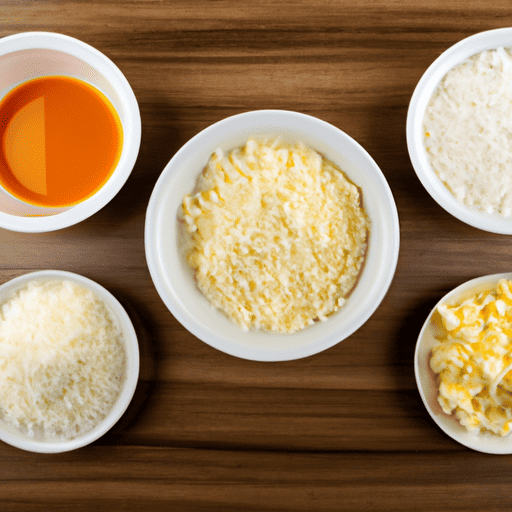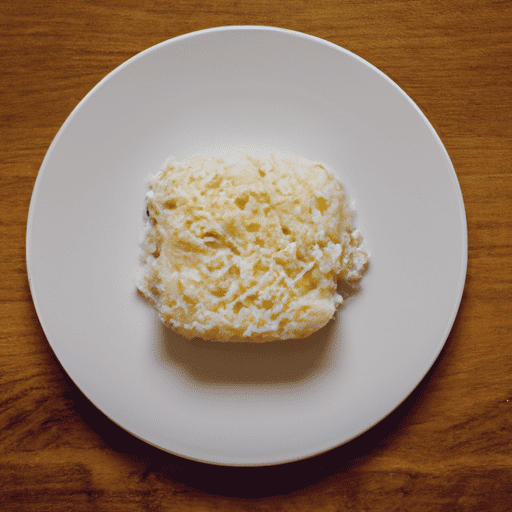Hello there Rice Cookers 101 readers! Are you ready to try a new and exciting twist to your usual rice meal? Today, we will be sharing with you a mouth-watering recipe for Filipino cheese rice. This cheesy and flavorful rice dish is sure to satisfy your cravings and leave you asking for more. It’s easy to make with the use of your trusty rice cooker, so let’s get started! We’ve made this filipino cheese rice recipe easy to follow 👨🍳. If you’re looking for our favorite rice cookers to make this recipe, check out our list of top rice cookers here.

Ingredients
- 2 cups uncooked jasmine rice
- 1 can (14 ounces) evaporated milk
- 1/4 cup butter
- 1/2 cup grated cheddar cheese
- 1/2 cup grated mozzarella cheese
- 1/4 cup grated parmesan cheese
- 1/2 teaspoon salt
- 1/4 teaspoon ground black pepper
Instructions
1. Rinse the rice several times until the water runs clear. Drain well.2. In a pot, combine the rice, evaporated milk, butter, salt, and pepper. Stir until well combined.3. Cover the pot and simmer over low heat for 15-20 minutes or until the rice is cooked and the liquid is absorbed.4. Turn off the heat. Add the cheddar, mozzarella, and parmesan cheeses. Stir until well combined and the cheese is melted.5. Cover the pot and let the flavors meld for another 5 minutes.6. Fluff the rice with a fork before serving. 
How long does filipino cheese rice last in the fridge?
Filipino cheese rice, also known as “cheesy rice,” is a popular dish in the Philippines. It is typically made with cooked rice, butter, milk, and shredded cheese. If properly stored in an airtight container, Filipino cheese rice can be stored in the refrigerator for up to four days. It should be reheated thoroughly before consuming. However, it is recommended to consume the dish within two to three days for best taste and quality. If the rice has been left at room temperature for more than two hours, it should be discarded to avoid the risk of foodborne illness.
Low calorie filipino cheese rice recipe substitutions
To make this Filipino Cheese Rice recipe lower in calories, there are a few substitutions that can be made. First, you can use low-fat cheese instead of the full-fat versions called for in the recipe. You can also use a non-dairy milk, such as almond milk, in place of the evaporated milk to reduce the calorie and fat content. Additionally, you can reduce the amount of butter used in the recipe or use a plant-based butter substitute. Another option is to replace some of the rice with cauliflower rice, which is lower in calories and carbohydrates. By making these substitutions, you can make the recipe lower in calories while still maintaining its flavor and texture.
What to serve with a filipino cheese rice?
Filipino cheese rice is a flavorful and hearty dish that can be served as a main course or a side dish. To complement its rich and creamy flavor, you can serve it with a variety of dishes. Grilled or roasted meats like chicken, beef or pork will pair well with Filipino cheese rice. You can also add some veggies like stir-fried green beans or roasted carrots to the dish to make it a complete meal. A side salad or some pickled vegetables like cucumbers or carrots will provide a fresh and tangy contrast to the rich and savory flavor of the cheese rice.
Whats the best sauce for a filipino cheese rice?
Filipino cheese rice is a mouth-watering and flavorful dish that can be made even better with the right sauce. In my opinion, the best sauce for Filipino cheese rice is a sweet and tangy tomato sauce with a touch of spice. To make this sauce, sauté some onions and garlic in oil until fragrant, then stir in canned tomato sauce, sugar, vinegar, soy sauce, and a pinch of red pepper flakes. Let the sauce simmer for a few minutes, then drizzle it over the rice and top with grated cheese and chili flakes for an extra kick. The combination of the savory cheese rice with the sweet and spicy tomato sauce is sure to leave your taste buds satisfied.
Filipino cheese rice health benefits
Unfortunately, Filipino cheese rice is not a particularly healthy dish as it is typically high in calories, carbs, and fat. However, there are plenty of healthier Filipino recipes out there to explore. Some popular options include grilled or steamed fish, vegetable stir-fries, and soups like sinigang or tinola that are packed with nutritious ingredients like leafy greens, ginger, and garlic. Another option to consider is adobo chicken, which is often made with lean protein and a tangy sauce of vinegar, soy sauce, and garlic. By choosing healthier recipes like these, you can still enjoy the delicious flavors and ingredients of Filipino cuisine while supporting your overall health and wellbeing.

